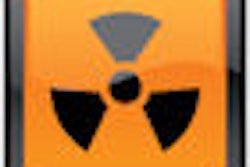A class-action lawsuit has been filed against Cedars-Sinai Medical Center and GE Healthcare related to patients who may have been overexposed to radiation during CT brain perfusion scans at the Los Angeles hospital.
The lawsuit was filed on October 19 in Los Angeles Superior Court against Cedars-Sinai, GE Healthcare, and GE Healthcare Technologies on behalf of patients who may have received up to eight times the standard radiation dose for CT brain perfusion scans at the facility from February 2008 to August 2009. The lawsuit was filed on behalf of Trevor Rees, who received two CT scans at Cedars-Sinai for stroke in December 2008.
The overexposure case came to light on October 8, when the U.S. Food and Drug Administration (FDA) announced that it was investigating a case at an unnamed hospital in which 206 patients allegedly received too much radiation during CT brain scans. Several days later, Cedars-Sinai acknowledged that it was the subject of the probe.
Cedars-Sinai officials said that the hospital became aware of the problems in August 2009, when a patient who had received a CT brain perfusion scan contacted the hospital complaining of temporary patchy hair loss. The hospital's investigation found that some CT brain perfusion studies were indeed delivering more radiation dose than anticipated, which could cause temporary hair loss or skin reddening in some patients.
Reports in the news media have indicated that the overexposures could have been caused by changes allegedly made to the scanner's preprogrammed settings as part of a new brain scanning protocol that the hospital had begun using. In its October 8 bulletin, the FDA said that patients received a radiation dose to the head of 3-4 Gy, up to eight times the expected maximum dose of 0.5 Gy.
Rees was one of the 206 patients who were scanned at Cedars-Sinai during the period. He received the first scan on December 22 and later received a second scan on December 24, because of technical problems with the first scan, he was told.
In the days and weeks following the scans, Rees experienced "significant hair and eyebrow loss, flaking of the scalp and facial skin, skin reddening or burns on his scalp, and various other indications of excessive radiation exposure," according to the complaint filed in the case.
The complaint goes on to state that Rees was contacted by hospital staff in September 2009 inquiring about his CT scan experience. He was asked if he had experienced any side effects following the scans, but he was not told why the inquiry was being made. Rees said he learned about the overexposure issue from a television news report.
"There was no mention of radiation to me on the phone at all," said Rees. "I never thought anything more about it until I saw the news about five days later. I'm supposed to live stress free and this hasn't helped matters."
The lawsuit charges Cedars-Sinai and the GE entities with medical malpractice, strict product liability, negligence, breach of express warranty, and breach of implied warranty. In a statement, the plaintiffs' attorney William Newkirk said that the machine's design means the issue might not be limited to Cedars-Sinai.
"We believe that because of the way the machine is manufactured and explained to medical users, there is a very good chance that this same situation has been or is being played out in radiology departments across the country," Newkirk said. "We have no idea how many people have been overdosed with radiation."
Web ads on Google are already soliciting patients who may have been scanned at Cedars-Sinai during the period in question.
Representatives for both GE and Cedars-Sinai declined to comment on the filing, citing the pending litigation. A spokesperson for Chalfont St. Giles, U.K.-based GE reiterated that "there were no malfunctions or defects in any of the GE Healthcare equipment involved."
The company also cited its efforts in offering dose-reducing technologies and in expanding CT training initiatives regarding dose optimization and the use of appropriate exam protocols. The company recommended that users evaluate their user-defined scanning protocols against validated protocols provided by manufacturers.
By Brian Casey
AuntMinnie.com staff writer
October 20, 2009
Related Reading
FDA CT overdose probe focuses on Cedars-Sinai, October 13, 2009
FDA issues radiation alert after CT brain perfusion overexposure, October 8, 2009
California technologist faces testimony in CT overdose case, September 18, 2009
NEJM study: Imaging procedures, radiation growing, August 26, 2009
Radiation dose and cancer risk in pediatric CTA exams, August 21, 2009
Copyright © 2009 AuntMinnie.com


















